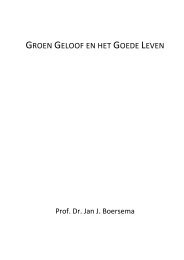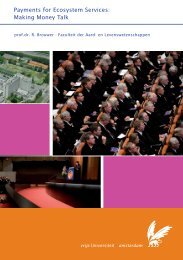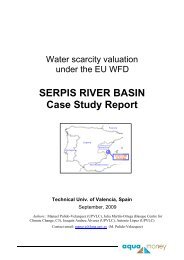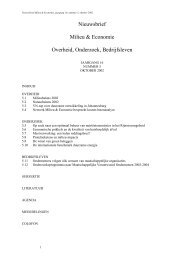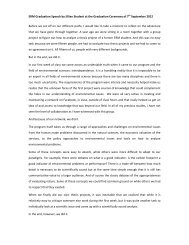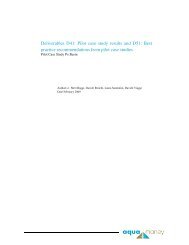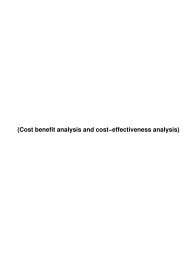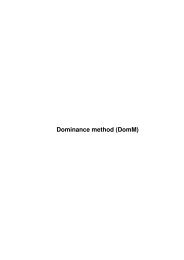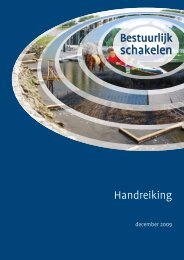AQUAMONEY CASE STUDY REPORT - VU University, Institute for ...
AQUAMONEY CASE STUDY REPORT - VU University, Institute for ...
AQUAMONEY CASE STUDY REPORT - VU University, Institute for ...
Create successful ePaper yourself
Turn your PDF publications into a flip-book with our unique Google optimized e-Paper software.
Option A Option B Status Quo<br />
Flood<br />
frequency<br />
Once every 25 Once every 25 Once every 5<br />
years<br />
years<br />
years<br />
Good Very good Moderate<br />
Water quality<br />
Increase<br />
water bill<br />
€ 3<br />
€ 10<br />
in<br />
No additional<br />
(25 Cent /(83 Cent /<br />
payment<br />
month) month)<br />
Fig.3. Example choice card<br />
I choose:<br />
(Please tick as Option A Option B Neither<br />
appropriate)<br />
Flood frequency was defined as the probability to cause damage (financial losses) to<br />
communities, agricultural and industrial uses in the areas downstream of the river restoration and<br />
re-naturalization measures, with the four levels: 5, 25, 50 and 100 years. The lowest level <strong>for</strong><br />
both attributes, water quality and flood frequency corresponded to the status quo. The monetary<br />
attribute payment vehicle was specified as an increase in the respondents’ water bill to fund the<br />
water management programme (in the <strong>for</strong>m of an annual contribution on top of the water bill).<br />
The payment levels used in the choice experiment were equivalent amounts of 3, 10, 30 and 50 €<br />
expressed in Romanian Lei. In order to combine the levels of the attributes into a number of<br />
options a fractional factorial design was used. 32 choice sets were assigned to 8 blocks such that<br />
each respondent was confronted with a randomly selected four choice set.<br />
3.1.2. Design of the contingent valuation scenarios<br />
In the study, the contingent valuation method consisted of asking respondents about their<br />
willingness to pay <strong>for</strong> increasing the size of natural areas along the river - from the actual<br />
situation to an ecologically enhanced situation. Respondents were told that, with restoration<br />
measures, wetlands and <strong>for</strong>ests could be connected to the Danube river which would lead to a<br />
more natural landscape with water flowing not only through the main channel but also through<br />
adjacent creeks and ponds (Box 1). Respondents were told that currently about 20 % (210 km 2 )<br />
of the <strong>for</strong>mer wetlands are still in a natural shape. It was also mentioned that the reference state<br />
of the area (1056 km 2 ) contained a large number of shallow lakes, ponds and marshes, linked to<br />
8





